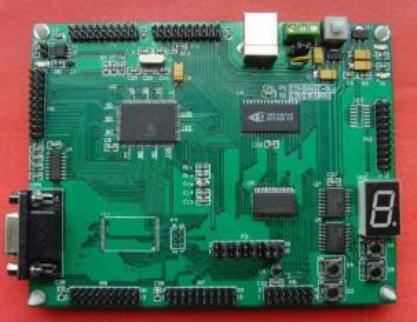Microcontrollers were born in 1971, and the early SCM microcontrollers were all 8-bit or 4-bit. One of the most successful is INTEL's 8051, after which the MCS51 series MCU system was developed on the 8051. The single-chip microcomputer system based on this system is still widely used until now. With the increasing requirements in the industrial control field, 16-bit single-chip microcomputers began to appear, but they have not been widely used because of unsatisfactory cost performance. With the great development of consumer electronic products after the 1990s, the technology of single-chip microcomputer has been greatly improved. With the wide application of the INTEL i960 series, especially the later ARM series, 32-bit microcontrollers quickly replaced the high-end status of 16-bit microcontrollers and entered the mainstream market. The performance of the traditional 8-bit single-chip microcomputer has also been rapidly improved, and the processing capacity has increased hundreds of times compared to the 1980s. The high-end 32-bit Soc single-chip microcomputer has a main frequency of more than 300MHz, and its performance catches up with the special-purpose processor in the mid-1990s, while the ex-factory price of the ordinary model dropped to $1, and the highest-end model was only $10. Contemporary single-chip microcomputer systems are no longer only developed and used in bare metal environments, and a large number of dedicated embedded operating systems are widely used on a full range of single-chip microcomputers. The high-end single-chip microcomputers, which are the core processing of handheld computers and mobile phones, can even directly use dedicated Windows and Linux operating systems. (1) The first stage (1974-1976) The manufacturing process is backward, the integration is low, and the two-chip form is adopted. A typical representative product is Fairchild's F8 series. Its characteristics are: the chip only includes 8-bit CPU, 64B RAM and two parallel ports, and a 3851 chip (with 1KB ROM, timer/counter and two parallel ports inside) is needed to form a complete set Single chip microcomputer. (2) The second stage (1977-1978) Functional components such as CPU, parallel port, timer/counter, RAM and ROM are integrated in a single chip, but the performance is low, the variety is small, and the application range is not very wide. Typical products are the MCS-48 series of Intel Corporation. Its characteristic is that the chip integrates an 8-bit CPU, 1KB or 2KB ROM, 64B or 128B RAM, only a parallel interface, no serial interface, an 8-bit timer/counter, and 2 interrupt sources . The off-chip addressing range is 4KB, and the chip pins are 40. (3) The third stage (1979-1982) (4) The fourth stage (1983 to present) The era of parallel development of 16-bit microcontrollers and 8-bit high-performance microcontrollers. The 16-bit machine has advanced technology, high integration, strong internal functions, and fast calculation speed. It also allows users to use a special language for industrial control. Its characteristic is that the chip includes a 16-bit CPU, 8KB of ROM, and 232B of RAM. , With serial/parallel interface, 4 16-bit timers/counters, 8 interrupt sources, Watchdog, bus control components, D/A and A/D conversion circuits are added, and off-chip search The address range can reach 64KB. Representative products include Intel’s MCS-96 series, Motorola’s MC68HC16 series, TI’s TMS9900 series, NEC’s 783×× series and NS’s HPC16040. However, because 16-bit single-chip microcomputers are relatively expensive and the sales volume is not large, a large number of applications require new 8-bit single-chip microcomputers with high performance, large capacity and multiple functions. The 32-bit single-chip microcomputer that has appeared in recent years is the top product of the single-chip microcomputer and has a relatively high operating speed. Representative products include Motorola's M68300 series and Hitachi (Hitachi)'s SH series, ARM, etc.
A Capacitive Membrane Touch Switch is type of switch, which operates only when the user makes contact with the object. The Capacitive membrane switch uses sensing technology to operate the functions of switch when touched. Capacitance switches use the human's body`s capacitance to identify touch and open/close the circuit.
Touch membrane switch can be divided into two kinds according to the working principle of the switch, one is resistance film switch, the other is capacitance membrane switch. Capacitive touch sensing technology has become the mainstream of touch sensing technology among many technologies. Capacitive touch switch, make the product appearance more beautiful.
Capacitive touch switch can sense through tempered glass, PMMA and other insulating materials with thickness greater than 20mm, accurately detect the effective touch position of the finger. Capacitive touch switch sensitivity, stability, reliability will not change due to the change of environmental conditions or long-term use, capacitive touch switch has excellent waterproof and strong anti-interference ability.
China Capacitive Membrane Switches, Waterproof Flexible Membrane Switches manufacturers, welcome Remote Control Membrane Switch, Flexible Membrane Switch Assembly purchasers from worldwide to visit our site. Capacitive Membrane Switches,Waterproof Flexible Membrane Switches,Remote Control Membrane Switch,Flexible Membrane Switch Assembly KEDA MEMBRANE TECHNOLOGY CO., LTD , https://www.kedamembrane.com
var videoObject = {container:'.video', variable:'player', autoplay: true, html5m3u8: true, video: "http://pcbfile.hqpcb.com/video/2019/0225/20190225004.mp4" }; if (!! window.ActiveXObject) {videoObject.html5m3u8 = false} var player = new ckplayer(videoObject); MCU development history